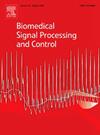增强冠状动脉分割和狭窄检测:利用新的深度学习技术
IF 4.9
2区 医学
Q1 ENGINEERING, BIOMEDICAL
引用次数: 0
摘要
冠状动脉疾病(CAD)是一个重要的全球健康问题,强调需要可靠和自动化的诊断解决方案。本研究提出了一种新的深度学习框架,旨在通过结合自组织神经网络(Self-ONN)来改善全动脉分割和狭窄定位。DenseSelfU-Net模型利用DenseNet121作为编码器和基于U-Net架构的Self-ONN增强解码器,实现了鲁棒的特征提取和精确的全动脉分割,在ARCADE Challenge数据集上实现了82.52%的IoU和90.35%的Dice分数。对于狭窄定位,Self-ONN被集成到多尺度注意网络(MA-Net)的关键组件中,其中包括多尺度融合注意块(MFAB)和位置智能注意块(PAB),通过局部和全局依赖关系捕获复杂的血管模式,从而形成DenseSelfMA-Net模型。DenseSelfMA-Net在ARCADE挑战数据集上,MFAB和PAB配置的Dice得分分别为60.59%和60.36%,IoU得分分别为46.09%和45.36%。这些结果证明了Self-ONN在提高诊断精度和促进早期CAD诊断方面的有效性,对临床实践具有很好的意义。本文章由计算机程序翻译,如有差异,请以英文原文为准。
Enhanced coronary artery segmentation and stenosis detection: Leveraging novel deep learning techniques
Coronary artery disease (CAD) is a significant global health concern, emphasizing the need for reliable and automated diagnostic solutions. This study proposes a novel deep learning framework aimed at improving both full artery segmentation and stenosis localization by incorporating Self-Organizing Neural Networks (Self-ONN). The DenseSelfU-Net model leverages DenseNet121 as an encoder and a Self-ONN enhanced decoder within a U-Net based architecture to achieve robust feature extraction and precise full artery segmentation, achieving an IoU of 82.52% and a Dice score of 90.35% on the ARCADE Challenge dataset. For stenosis localization, Self-ONN is integrated into key components of the Multi-Scale Attention Network (MA-Net), which includes the Multi-Scale Fusion Attention Block (MFAB) and the Position-wise Attention Block (PAB), capturing complex vascular patterns through both local and global dependencies and resulting in the DenseSelfMA-Net model. The DenseSelfMA-Net achieves Dice scores of 60.59% and 60.36% and IoU scores of 46.09% and 45.36% for the MFAB and PAB configurations, respectively on the ARCADE challenge dataset. These results demonstrate the effectiveness of Self-ONN in enhancing diagnostic precision and facilitating early CAD diagnosis, with promising implications for clinical practice.
求助全文
通过发布文献求助,成功后即可免费获取论文全文。
去求助
来源期刊

Biomedical Signal Processing and Control
工程技术-工程:生物医学
CiteScore
9.80
自引率
13.70%
发文量
822
审稿时长
4 months
期刊介绍:
Biomedical Signal Processing and Control aims to provide a cross-disciplinary international forum for the interchange of information on research in the measurement and analysis of signals and images in clinical medicine and the biological sciences. Emphasis is placed on contributions dealing with the practical, applications-led research on the use of methods and devices in clinical diagnosis, patient monitoring and management.
Biomedical Signal Processing and Control reflects the main areas in which these methods are being used and developed at the interface of both engineering and clinical science. The scope of the journal is defined to include relevant review papers, technical notes, short communications and letters. Tutorial papers and special issues will also be published.
 求助内容:
求助内容: 应助结果提醒方式:
应助结果提醒方式:


